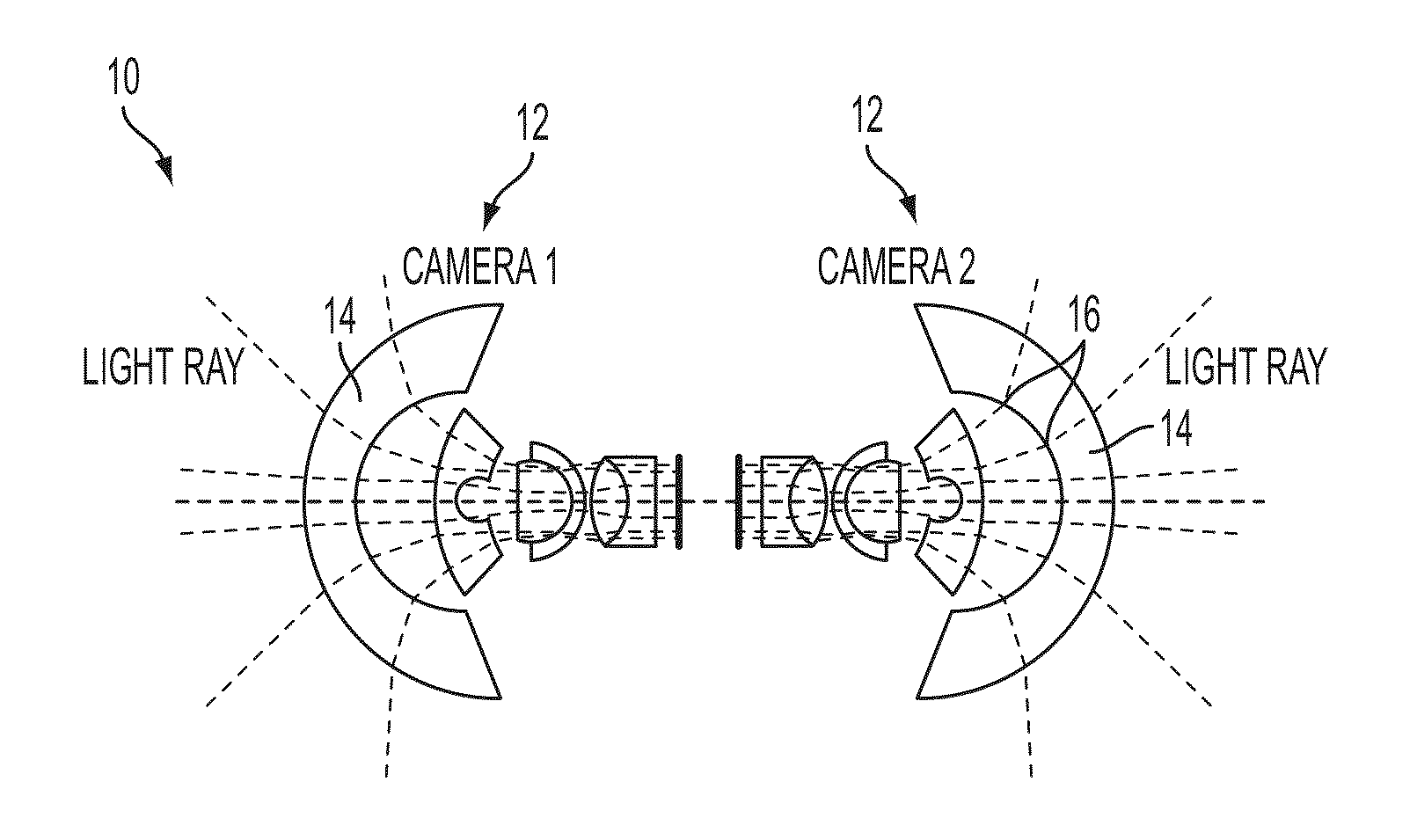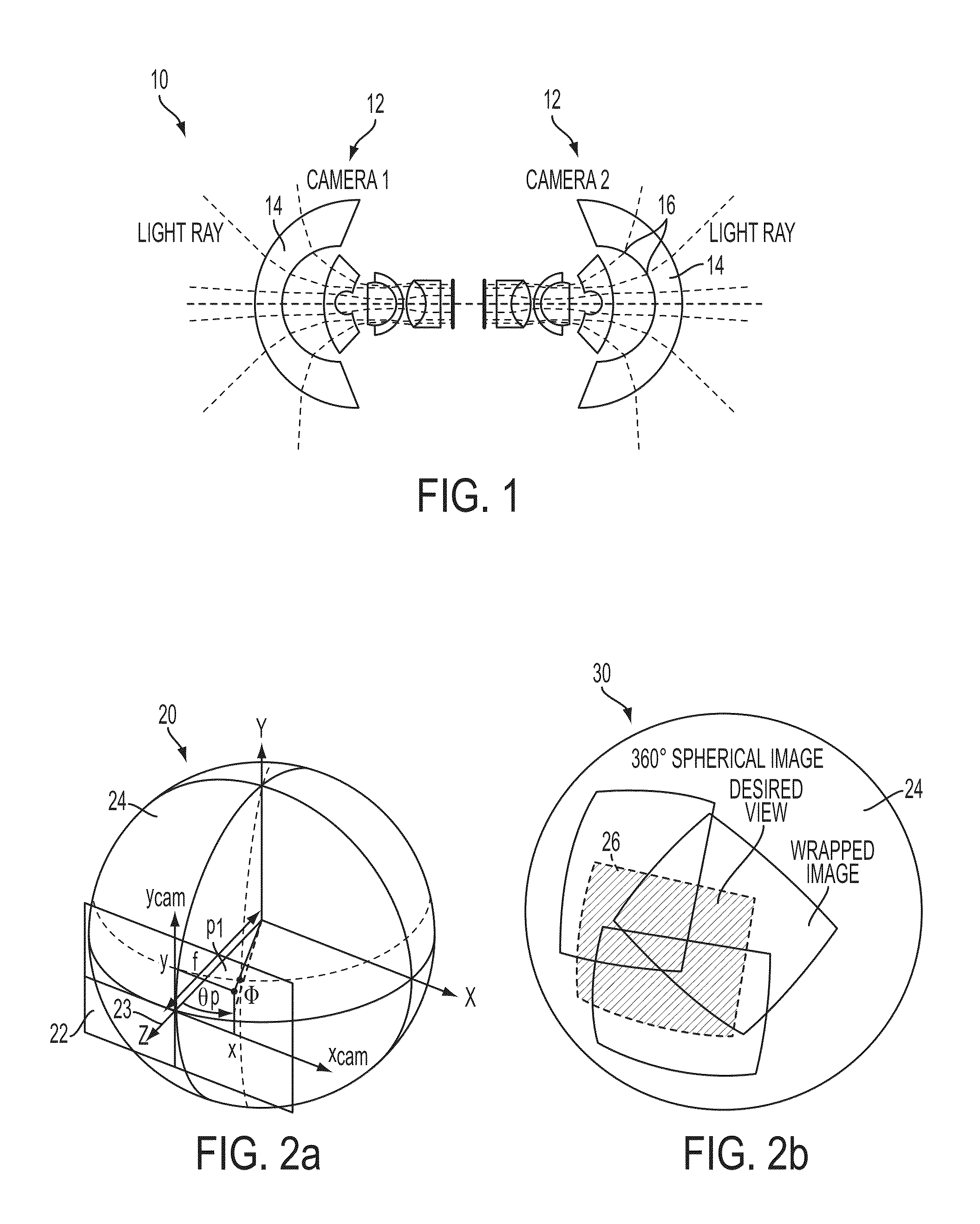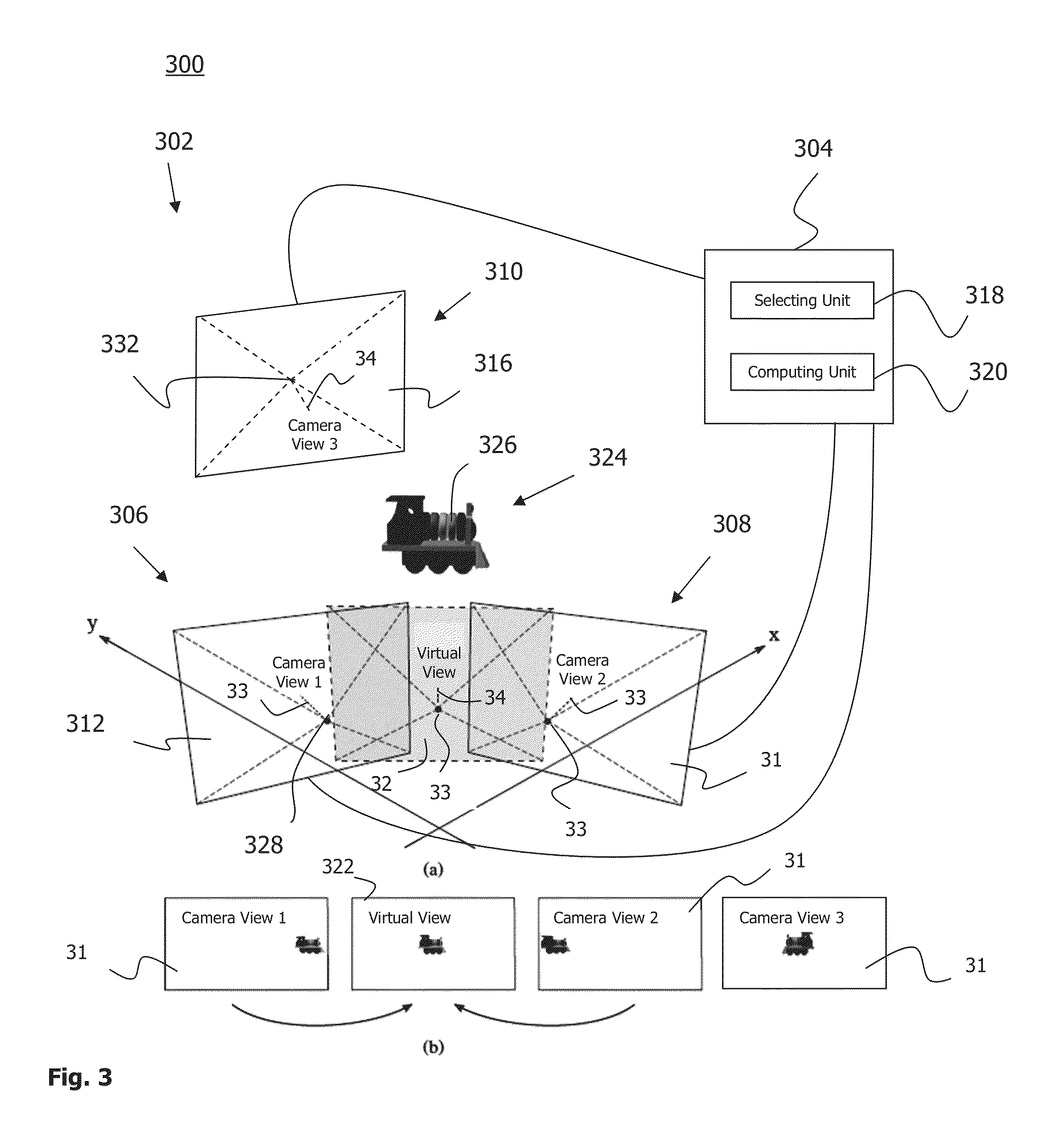Technique for view synthesis
a virtual view and view technology, applied in the field of virtual view computing, can solve the problems of inability to change the point of view in post-processing, and the inability to capture images in all directions at the same tim
- Summary
- Abstract
- Description
- Claims
- Application Information
AI Technical Summary
Benefits of technology
Problems solved by technology
Method used
Image
Examples
first embodiment
[0109]In the method 400, the multilinear relation relating the selected camera views and the desired virtual view 322 is computed based on the parameters of the virtual view 322. For example, the multilinear relation is parameterized, i.e., the multilinear relation is computed as a function of the parameters of the virtual view 322. For computing the virtual view 322 for a certain set of parameters of the virtual view 322, coefficients representing the multilinear relation are evaluated once for each part of the partition. The coefficients of the multilinear relation are applied for a plurality of pixels, including at least the pixels belonging to the corresponding part of the partition.
second embodiment
[0110]In the method 400, the multilinear relation is computed based on the projection matrices, P, of the selected camera views and the virtual view 322. For example, the multilinear relation for combining three views, e.g., two camera views 312 and 314 and one virtual view 322, is representable by a trifocal tensor, T (P312, P314, P322). The trifocal tensor, T, is applied, if the virtual view 322 is on one of the edges in the mesh 1000, e.g., on the edge 1006-7. The multilinear relation relating four different views, e.g., three camera views 312, 314 and 316 and one virtual view 322, is representable by a quadrifocal tensor, Q (P312, P314, P316, P322). The quadrifocal tensor, Q, is applied, if the virtual view 322 is within one of the parts of the partition, e.g., within the part 1004-2.
[0111]At least the projection matrix, P322, of the virtual view 322 is parameterized. By computing the multilinear relation as a function of the projection matrices of the related views, the multili...
PUM
 Login to View More
Login to View More Abstract
Description
Claims
Application Information
 Login to View More
Login to View More - R&D
- Intellectual Property
- Life Sciences
- Materials
- Tech Scout
- Unparalleled Data Quality
- Higher Quality Content
- 60% Fewer Hallucinations
Browse by: Latest US Patents, China's latest patents, Technical Efficacy Thesaurus, Application Domain, Technology Topic, Popular Technical Reports.
© 2025 PatSnap. All rights reserved.Legal|Privacy policy|Modern Slavery Act Transparency Statement|Sitemap|About US| Contact US: help@patsnap.com



